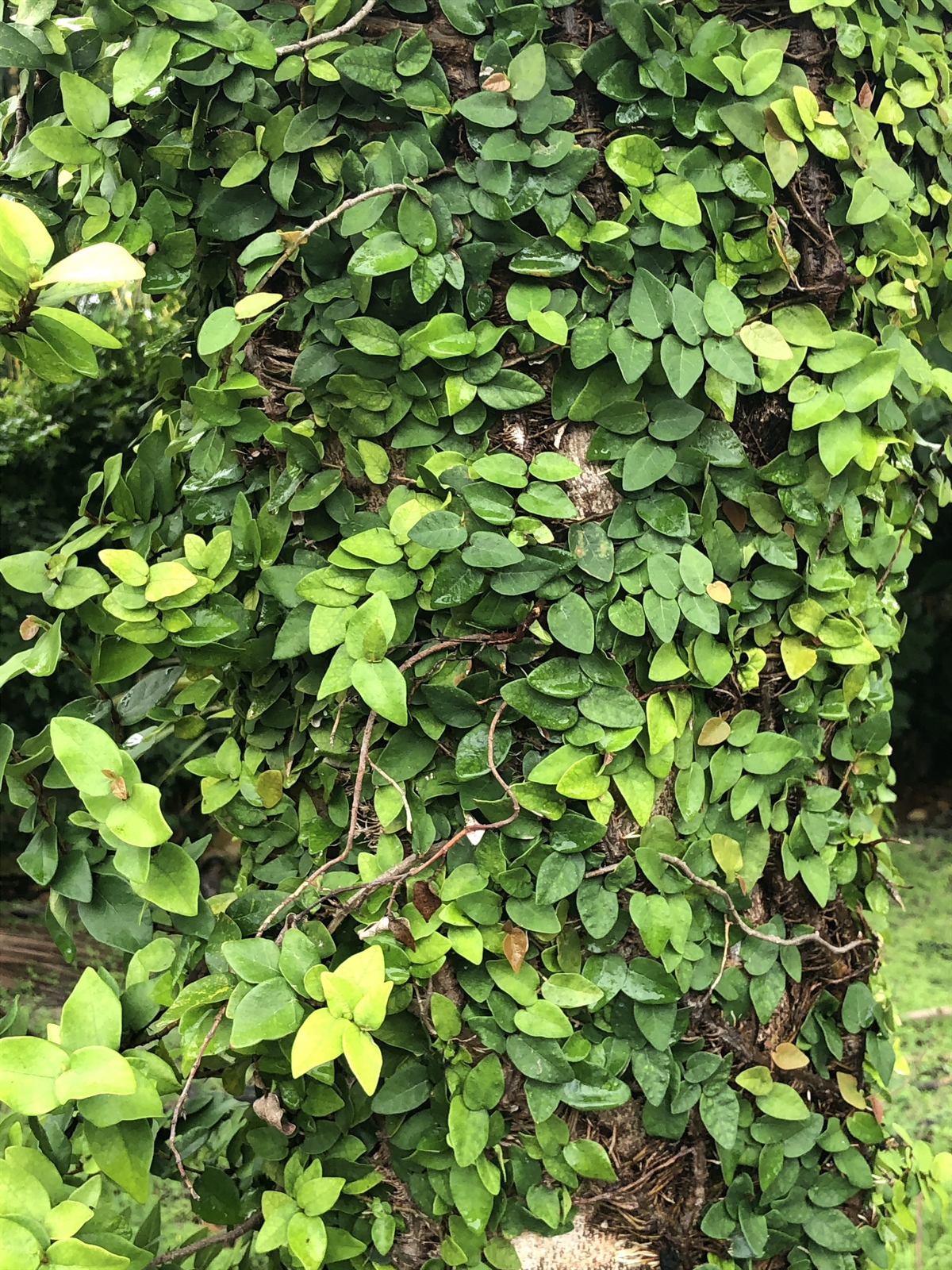Habit: Ficus pumila grows as a creeping of climbing vine attached to surfaces with adventitious roots. The leaves are arranged alternately, to 5 cm in length, ovate, with an entire margin, and an acute leaf apex. The adaxial leaf surface is rough. Where the petiole attaches to the stem there is a prominent ring on the stem formed from the dehiscent apical sheath. The apical sheath has a slight hook at its tip known as a “cats-claw”. Vegetative material produces a slightly milky latex when broken.
The highly reduced incomplete, imperfect, actinomorphic, flowers are borne entirely within a structure known as a synconium (fig) and are fertilized by wasps. It is monoecious. Staminate flowers have a perianth of 2-6 parts and 2 anthers. The carpellate flowers have no perianth or stamens and a single carpel. The “fruits” are in pairs and turn purple/brown upon maturity.
Habitat: Ficus pumila grows on walls in Human Altered environments (yards, gardens, homes).
Distribution: Ficus pumila is NOT native to the Lucayan Archipelago. It is native to the Asia.
Medicinal/Cultural/Economic usage: Ficus pumila is not known to be used medicinally in the Lucayan Archipelago.
It is grown ornamentally.

